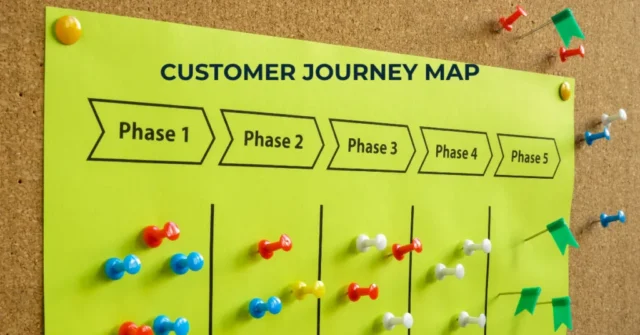In today’s competitive marketplace, understanding the customer experience is more crucial than ever. One effective way to gain insight into how customers interact with your brand is through customer journey mapping. This strategic tool helps businesses visualize and analyze the various stages a customer goes through, from awareness to purchase and beyond. In this blog, we’ll explore the importance of customer journey mapping and how it can enhance your marketing strategies and overall business performance.

What is Customer Journey Mapping?
Customer journey mapping is the process of creating a visual representation of the steps customers take when interacting with a brand or product. This includes every touchpoint, from initial awareness through research, consideration, purchase, and post-purchase evaluation. By mapping out these stages, businesses can gain a clearer understanding of customer behavior, pain points, and preferences.
Why is Customer Journey Mapping Important?
- Enhanced Customer Understanding
One of the primary benefits of customer journey mapping is that it provides businesses with a deeper understanding of their customers. By analyzing each stage of the journey, companies can identify what drives customer decisions, their motivations, and the obstacles they face. This insight is essential for creating targeted marketing strategies that resonate with customers.
- Improved Customer Experience
By identifying pain points and areas of friction in the customer journey, businesses can make necessary adjustments to improve the overall customer experience. For instance, if customers struggle to find information on a website, companies can streamline navigation or enhance content accessibility. Improving the customer experience leads to higher satisfaction, loyalty, and ultimately, increased sales.
- Informed Decision-Making
Customer journey mapping enables data-driven decision-making. By analyzing customer behavior and preferences, businesses can make informed choices about product development, marketing campaigns, and resource allocation. This strategic approach helps organizations invest in initiatives that are more likely to yield positive results.
- Alignment Across Teams
Customer journey mapping fosters collaboration among different departments within a business. Marketing, sales, customer service, and product development teams can all benefit from a shared understanding of the customer journey. This alignment ensures that everyone is working towards the same goal: providing an exceptional customer experience.
- Personalization Opportunities
Personalization has become a critical factor in successful marketing strategies. Customer journey mapping allows businesses to identify opportunities for personalized communication and offers at various touchpoints. By tailoring messages and experiences to individual customer needs, companies can increase engagement and conversion rates.
- Increased Customer Retention
Understanding the customer journey helps businesses identify areas for improvement in post-purchase engagement. By mapping the journey beyond the initial sale, companies can develop strategies to nurture relationships with existing customers, leading to increased loyalty and repeat purchases.
- Effective Marketing Strategies
Customer journey mapping provides valuable insights that can inform marketing strategies. By understanding how customers research and make purchasing decisions, businesses can create targeted campaigns that address customer needs and preferences at each stage of the journey. This approach enhances the effectiveness of marketing efforts and improves return on investment (ROI).
How to Create a Customer Journey Map
Creating a customer journey map involves several steps:
- Define Your Objectives: Determine the purpose of your journey map. Are you looking to improve customer satisfaction, enhance marketing strategies, or streamline operations?
- Identify Customer Personas: Develop detailed customer personas that represent different segments of your audience. Understanding the unique characteristics and behaviors of each persona is essential for effective mapping.
- Map Out Touchpoints: Identify all the touchpoints where customers interact with your brand, both online and offline. This includes website visits, social media interactions, customer service calls, and in-store experiences.
- Analyze Customer Behavior: Gather data on how customers engage with your brand at each touchpoint. This can include surveys, interviews, website analytics, and customer feedback.
- Visualize the Journey: Create a visual representation of the customer journey that highlights each stage, touchpoint, and customer emotion. This can be done using diagrams, flowcharts, or specialized software.
- Identify Pain Points and Opportunities: Analyze the journey map to pinpoint pain points and areas for improvement. Look for opportunities to enhance the customer experience and drive engagement.
- Implement Changes and Monitor Results: Use the insights gained from the journey map to implement changes in your marketing strategies, customer service processes, or product offerings. Continuously monitor results and adjust your approach based on customer feedback and performance metrics.
Conclusion
Customer journey mapping is a powerful tool that helps businesses understand and optimize the customer experience. By visualizing the various stages of the customer journey, organizations can gain valuable insights into customer behavior, preferences, and pain points. This understanding is essential for improving customer satisfaction, increasing retention, and driving sales.


No responses yet